How to Water Plants: 10 Effective Tips to Keep Plants Thriving
- June 24, 2024
- 0 comment
Discover the best watering techniques with our top 10 tips for thriving plants. Learn how to water plants effectively for lush, healthy growth. Want to enhance your gardening skills? Effective watering is more than just a routine; it’s essential for your plants’ health. Our guide offers 10 practical tips to ensure your plants receive the right amount of water.
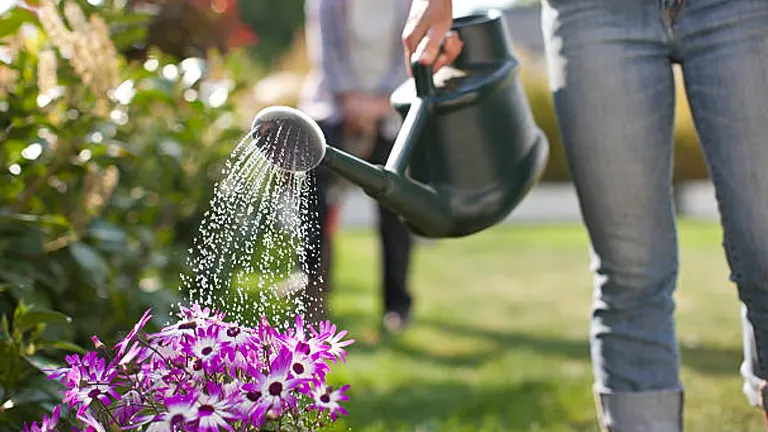
You’ll learn not only the best times to water but also the right techniques to use for different types of plants. With these tips, you can expect to see your garden grow healthier and more vibrant than ever before.
List of Guides on How to Water Plants
- Assess Individual Water Requirements
- Measure Soil Moisture Accurately
- Optimal Watering Times
- Practice Deep Watering Techniques
- Select Appropriate Watering Tools
- Adjust Watering Based on Environmental Factors
- Implement Mulching
- Special Considerations for Container Plants
- Ensure Proper Drainage
- Monitor and Adjust Watering Practices
How to Water Plants: 10 Effective Tips to Keep Plants Thriving
1. Assess Individual Water Requirements

Plants vary widely in their water needs. To water effectively, it’s essential to know these requirements. For instance, succulents need far less water compared to ferns, which prefer consistently moist conditions. Start by researching the water needs for each type of plant in your garden. Regularly check your plants for signs of distress, such as wilting or yellowing leaves, to determine if they are receiving too much or too little water.
Additional Tips:
- Use a moisture meter to measure the soil’s moisture level at root depth, ensuring plants receive adequate water.
- Tailor your watering schedule to the needs of your plants, taking into account the local climate and seasonal variations.
- Water plants early in the morning or late in the evening to minimize evaporation and maximize water uptake.
- Beyond wilting and yellowing, look for signs like leaf browning or crispiness, which may also indicate improper watering.
- Place plants with similar watering needs together to streamline your watering process and enhance plant health.
2. Measure Soil Moisture Accurately
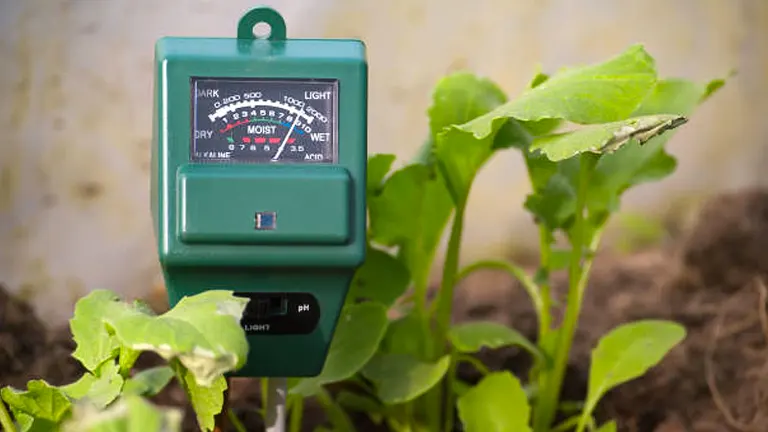
Effective watering begins with a precise understanding of soil moisture to avoid common issues like overwatering, which can cause root rot or fungal growth. To assess the moisture content accurately, use the finger test method: insert your finger into the soil up to the second knuckle. This depth is generally indicative of the soil’s moisture level at the roots for most small to medium-sized plants. If the soil feels dry, it’s a signal that your plants need water. Conversely, if the soil is damp, hold off on watering to prevent excess moisture, which can be just as harmful as too little.
Additional Tips:
- Periodically calibrate your soil moisture meter to ensure its accuracy continues over time.
- In larger gardens, check different areas as moisture can vary across different sections, especially under trees or near buildings.
- Integrate local weather forecasts into your watering strategy to anticipate needs before a heatwave or rainy period.
- After adjusting your watering based on the moisture tests, observe how your plants react over the following days to fine-tune your approach.
- Applying organic mulch around plants can help maintain soil moisture levels, reducing the frequency of watering needed.
3. Optimal Watering Times

Choosing the right time to water is crucial for maximizing water efficiency and plant health. Early morning or late evening are the optimal times for watering. In the morning, cooler temperatures and calm winds help minimize evaporation, allowing water to penetrate deeply into the soil and reach the roots effectively. Evening watering also benefits from lower temperatures, but it’s important to allow enough time for the leaves to dry before nightfall to prevent the onset of fungal diseases.
Watering during these times not only conserves water but also ensures that plants receive the hydration they need without the stress caused by midday heat or excessive moisture on foliage overnight.
Additional Tips:
- Adjust watering times based on the day’s humidity; higher humidity can further reduce evaporation rates.
- For sensitive plants, use a soil thermometer to avoid watering when the soil is too cold, particularly in early morning.
- Consider installing a timer on your irrigation system to water at the same time each day, ensuring consistency.
- Be aware of heat advisories or unexpected rain forecasts to adapt your watering schedule promptly.
- Some plants are particularly susceptible to fungal diseases from evening moisture; tailor your watering time to the specific needs of these plants.
4. Practice Deep Watering Techniques
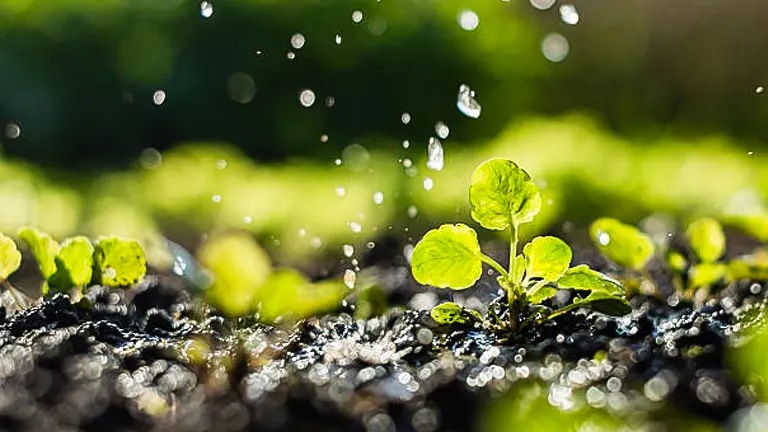
Deep watering is a method that promotes the development of strong, deep root systems in plants, enhancing their stability and ability to access nutrients and moisture during dry periods. Rather than applying water frequently and superficially, deep watering involves less frequent irrigation that reaches about 6 to 8 inches into the soil. This technique ensures that water reaches the deep roots and doesn’t merely moisten the surface, encouraging roots to grow downward in search of moisture.
This practice is especially beneficial as it helps plants become more resilient and efficient in their water use, ultimately leading to healthier, more drought-tolerant plants.
Additional Tips:
- Continue watering until you see runoff, then stop to allow absorption, and repeat if necessary. This ensures deep soil saturation.
- Aim to water deeply early in the growing season to encourage roots to establish downwards.
- Place PVC pipes or tubes vertically into the soil near plant roots to direct water deeper underground, bypassing the upper soil layers.
- Use a measuring cup or gauge to track the amount of water used per session, aiming for consistent depth across your garden.
- Occasionally dig a small test hole after watering to visually confirm that moisture has reached the root zones of your plants.
5. Select Appropriate Watering Tools
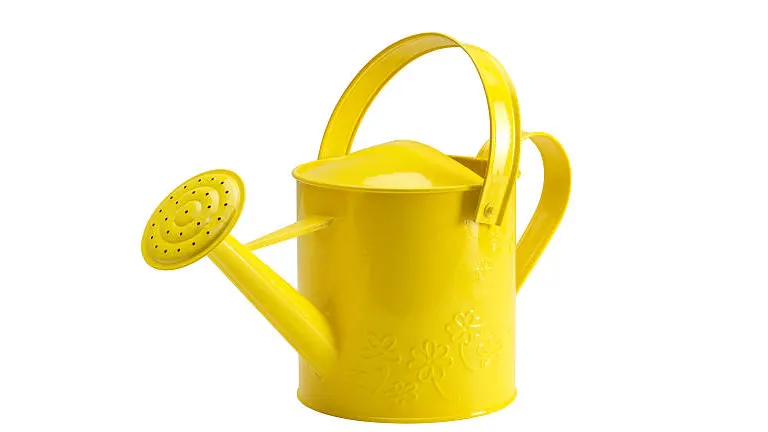
Choosing the right tools for watering is critical to ensure efficiency and plant health. For expansive garden areas, soaker hoses or drip irrigation systems are ideal as they deliver water slowly and directly to the soil surface, minimizing both waste and evaporation. These systems are particularly beneficial for maintaining consistent moisture levels without oversaturating the plants.
In contrast, for smaller gardens or container plants, a watering can with a long spout provides the necessary control and precision. This tool allows you to direct water exactly where it’s needed — at the base of the plants, avoiding the leaves to reduce the risk of disease.
Additional Tips:
- Consider the layout and reach of your garden to determine whether multiple watering zones are needed.
- Look for tools with adjustable flow rates and patterns to suit different plant needs.
- Choose high-quality, durable materials that can withstand outdoor conditions and frequent use.
- Ensure the tools are easy to handle and operate, especially for larger systems that require setup and maintenance.
- Select tools that promote water conservation, such as timers and moisture sensors, to optimize usage and support sustainable gardening practices.
6. Adjust Watering Based on Environmental Factors
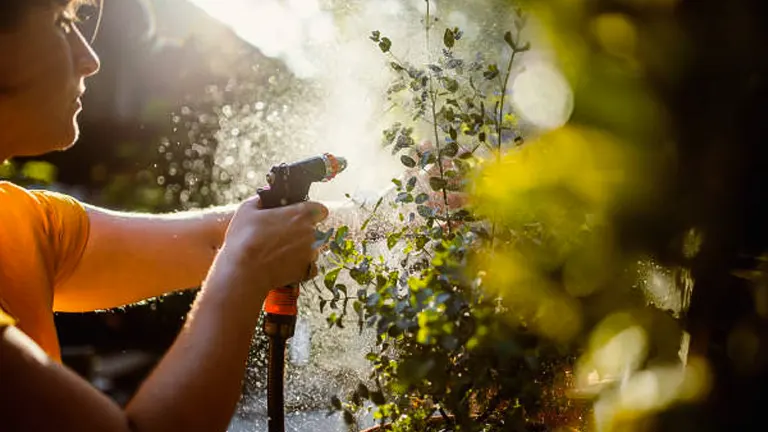
Adapting your watering routine to align with current weather and environmental conditions is essential for efficient plant care. In hot and dry periods, plants often require more frequent watering to compensate for increased evaporation and transpiration. Conversely, in rainy or cooler periods, the need for manual watering may decrease significantly as natural precipitation and reduced evaporation rates maintain soil moisture.
Monitoring local weather forecasts and observing your garden’s response to weather changes are key to optimizing your watering practices. This approach helps prevent overwatering, conserves water, and ensures that your plants receive just the right amount of hydration.
Additional Tips:
- This helps you measure exactly how much rain your garden has received, allowing you to adjust your watering accordingly.
- A home weather station can provide detailed local data, including temperature and humidity, which are crucial for fine-tuning your watering schedule.
- Keep a log of soil moisture levels in relation to weather patterns to develop a more responsive watering strategy.
- If using an irrigation system, set up zones that can be adjusted independently to cater to different areas of your garden as environmental conditions change.
- Learn to recognize signs of water stress in plants, such as wilting or leaf curl, which can indicate the need for immediate watering regardless of general schedules.
7. Implement Mulching
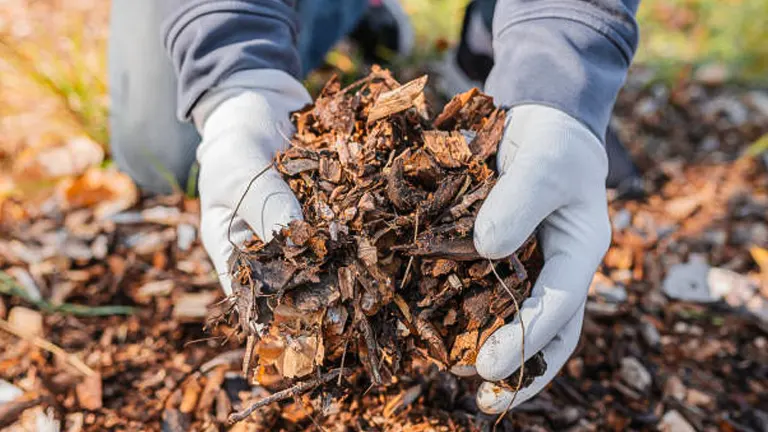
Mulching is an effective technique to enhance soil health and moisture retention. By applying a 2-3 inch layer of organic mulch around your plants, you create a barrier that significantly reduces water evaporation from the soil. This layer also helps moderate soil temperature, keeping it cooler in the heat and warmer during cooler weather, which is beneficial for root development and plant health.
Organic mulches like shredded bark, straw, or leaf mold not only conserve water but also gradually enrich the soil with nutrients as they decompose. However, it’s important to avoid placing mulch directly against plant stems to prevent moisture-related issues, such as rot and fungal infections.
Additional Tips:
- Select a mulch type that is best suited for your specific garden plants and climate.
- Replenish the mulch layer periodically to maintain its benefits throughout the growing season.
- Darker mulches absorb more heat, which can be beneficial in cooler climates, while lighter mulches reflect sunlight, keeping the soil cooler in hot areas.
- Lay down a layer of landscape fabric under the mulch to prevent weeds from growing, which can compete with your plants for water.
- Strategically place mulch to direct water runoff towards plants, ensuring that water reaches the roots where it’s needed most.
8. Special Considerations for Container Plants
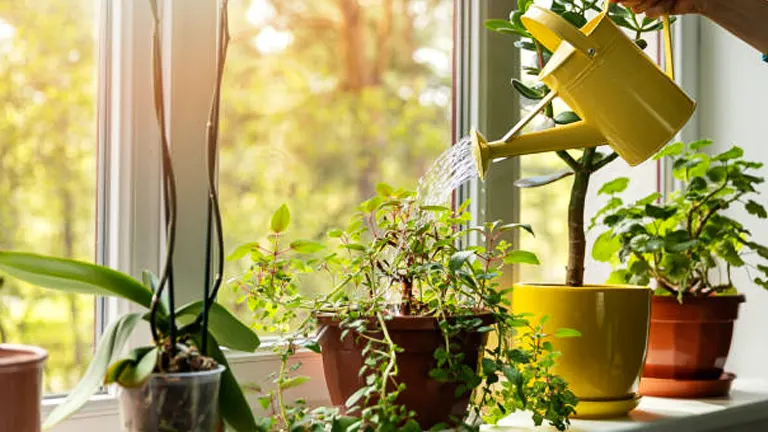
Watering container plants effectively involves understanding their unique needs. Unlike plants in the ground, those in containers tend to dry out quicker and therefore may require more frequent watering. However, the key is balance: ensuring adequate moisture without waterlogging.
Ensure each container has proper drainage holes to allow excess water to escape, preventing issues like root rot. The choice of container material also plays a critical role; porous materials like clay are beneficial as they allow both air and water to move through, reducing the risk of overwatering.
Additional Tips:
- Ensure that drainage holes remain unblocked to prevent water buildup.
- Place saucers under pots to catch excess water, but empty them regularly to avoid standing water.
- Container plants often have varying water requirements based on their size, the pot material, and environmental conditions.
- Use a high-quality potting mix that promotes good drainage while retaining adequate moisture.
- Remember that metal or plastic containers might heat up more in sunlight, increasing evaporation and possibly stressing the plants, requiring adjusted watering schedules.
9. Ensure Proper Drainage
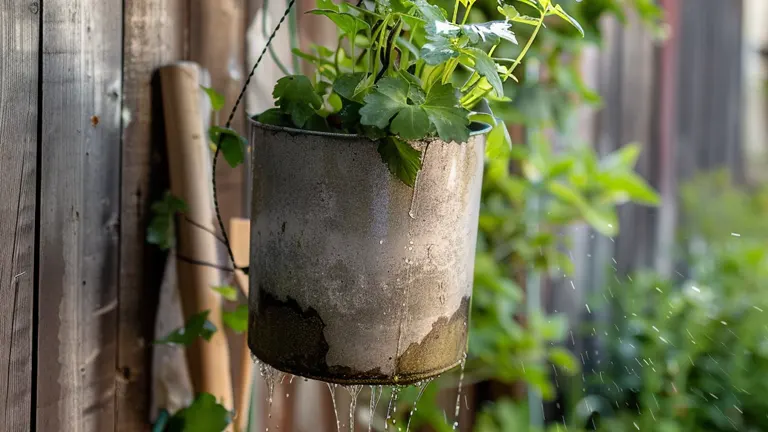
Effective watering involves not just how much and how often you water, but also how well the water is able to drain. Proper drainage is essential to avoid water accumulation around plant roots, which can cause harmful conditions like root rot. For garden soil that is heavy or clay-rich, improving drainage is crucial. This can be achieved by amending the soil with materials such as sand or organic matter, which help to break up dense soil and facilitate better water flow.
In the case of container plants, selecting the right potting mix is vital. Opt for mixes specifically designed for good drainage. Additionally, placing a layer of gravel or small stones at the bottom of containers can further assist in ensuring that water doesn’t stagnate.
Additional Tips:
- Use pot feet or stands to raise containers off the ground, enhancing airflow and drainage.
- Before planting, conduct a simple test by watering the soil and observing how quickly it drains. Slow drainage indicates the need for soil amendment.
- For garden beds, incorporate organic compost or perlite which not only improve drainage but also enhance soil fertility.
- Check and clear any blockages in container drainage holes to maintain effective water exit.
- Pay attention to how your soil handles rain; pooling water suggests that further improvements to drainage may be necessary.
10. Monitor and Adjust Watering Practices

Mastering the art of watering requires vigilant observation and timely adjustments to meet the evolving needs of your plants. Regular monitoring of plant health is critical. Signs like drooping leaves, discoloration, or dry, crispy edges can indicate water stress, whether from too much or too little water.
Based on your observations, adjust your watering schedule to better align with the needs of your plants as they respond to seasonal changes and growth phases. A useful tool in this process is a garden journal. Keeping a detailed record of how your plants respond to different watering frequencies, amounts, and the local weather conditions can provide invaluable insights. This documented history allows you to refine your techniques and develop a more targeted approach to watering.
Additional Tips:
- Consider using moisture sensors that provide real-time soil moisture levels and can alert you when watering is needed.
- Regularly inspect the soil under the surface with a soil probe or by simply digging a small amount away to check moisture levels deeper where the roots are.
- Be proactive about checking the forecast and adjusting your watering plan before weather changes occur.
- Organize plants with similar water needs together, making it easier to manage and adjust watering practices efficiently.
- Use your garden journal to track successes and challenges from previous seasons to anticipate needs and adjust practices accordingly.
Watering Myths Debunked
Many gardeners harbor misconceptions about effective plant watering, which can lead to suboptimal growth or even plant health issues. Here, we address and correct some of the most prevalent myths:
- More Water Equals Faster Growth: It’s a common belief that more water will accelerate plant growth. However, plants have specific water requirements that, when exceeded, can lead to detrimental effects such as root rot and fungal infections. Overwatering is one of the leading causes of plant mortality in managed environments. For instance, overwatered roots often suffer from oxygen starvation as excessive moisture expels air from the soil, leading to anaerobic conditions harmful to root health.
- All Plants Require the Same Amount of Water: Each plant species has evolved to thrive under specific environmental conditions, including water availability. For example, cacti, adapted to arid environments, require significantly less water than water-loving willows. Mimicking a plant’s natural habitat is crucial for its health.
- Watering in the Sun Harms Plants: A common myth suggests that watering plants in sunlight can scorch their leaves due to water droplets acting like magnifying glasses. Studies show that while water droplets can focus light, most plants have leaf structures that repel water, minimizing risk. However, watering in full sun is less efficient due to higher evaporation rates, making early morning or late evening the best times for watering.
- Wilting Always Indicates Underwatering: Wilting can indeed signal insufficient watering, but it can also be a symptom of overwatering where root damage prevents water uptake. Checking soil moisture before watering is crucial to diagnosing the cause of wilting.
To further illustrate the differences in water needs among various plants, here’s a table showcasing the average water requirements for several common types of plants:
| Plant Type | Water Needs (milliliters per week) | Native Habitat |
|---|---|---|
| Cacti | 50-200 | Arid, desert |
| Ferns | 300-500 | Humid, understory |
| Tomatoes | 500-800 | Temperate climates |
| Willow Trees | Over 1000 | Wetlands |
The Role of Water Quality in Plant Health
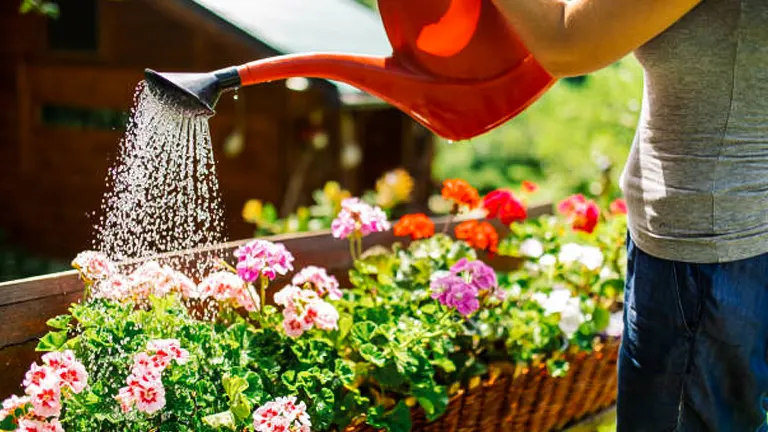
The water used in gardening is not just a medium for hydration but also a crucial factor affecting the overall health and growth of plants. Different sources of water contain various minerals and chemical treatments that can have significant effects on soil chemistry and, consequently, on plant health.
- Tap Water and Its Constituents: Commonly used for irrigation, tap water often contains chlorine and chloramines, used to kill harmful bacteria and other pathogens. While these are safe for human consumption, they can adversely affect plant growth by altering soil microbiota crucial for nutrient absorption. Tap water may also contain fluoride and other dissolved salts that can accumulate in the soil, potentially leading to toxicity over time.
- Rainwater as an Alternative: Rainwater is generally softer and more acidic than tap water, lacking many of the chemical treatments found in municipal water supplies. Its natural composition makes it particularly beneficial for plants that thrive in slightly acidic conditions. Using rainwater can help maintain a balanced soil ecosystem and promote healthier plant growth.
- Filtered and Distilled Water: For highly sensitive plants, filtered or distilled water may be necessary to avoid the buildup of unwanted minerals. Distilled water, free from any dissolved salts, provides the highest purity but should be used judiciously as it also removes beneficial minerals essential for plant growth.
- Periodic Flushing of Soil: Regardless of the water source, periodic flushing of the soil with distilled water can prevent the accumulation of harmful salts and minerals. This practice is especially crucial in container gardening where soil conditions can change rapidly.
To illustrate the impact of different water types on soil pH and electrical conductivity (a measure of the soil’s ability to conduct electrical current, which correlates with salt concentration), here’s a table showcasing the potential effects:
| Water Type | Typical pH Range | Electrical Conductivity (μS/cm) | Ideal for Plants That Prefer |
|---|---|---|---|
| Tap Water | 6.5 – 8.5 | 200 – 800 | Tolerant of alkaline conditions |
| Rainwater | 5.5 – 6.5 | 10 – 50 | Acid-loving plants |
| Filtered Water | Variable | Depends on filter | Broad range, especially sensitive species |
| Distilled Water | 7.0 (neutral) | 0 – 1 | Plants sensitive to salts/minerals |
Enhancing Water Quality for Plant Health
Understanding and managing water quality can significantly impact your gardening success. Adjusting your water choice based on plant species, local water quality, and observed plant responses can lead to a more vibrant, healthy garden. Regular testing of soil pH and electrical conductivity can also help tailor your watering practices more precisely, ensuring optimal plant health and growth.
Advanced Watering Techniques
As gardeners become more proficient, exploring advanced watering techniques can significantly enhance plant health and water use efficiency. Here’s an overview of sophisticated systems and technologies that can optimize your watering routine:
- Self-Watering Systems
- Self-watering planters and systems are excellent for consistent moisture management, particularly beneficial for busy gardeners or for container gardening. These systems typically involve a reservoir that allows plants to absorb water through capillary action, which helps maintain optimal soil moisture and reduces the frequency of manual watering.
- Automated Drip Irrigation
- Drip irrigation is a highly efficient method that delivers water directly to the base of the plant at a slow, steady rate. This precision reduces water wastage and minimizes evaporation. Automated systems can be equipped with timers and moisture sensors, which adjust watering based on real-time soil conditions, further enhancing water conservation and plant health.
- Hydrogels in Soil Management
- Hydrogels are super-absorbent polymers that can hold many times their weight in water and release it slowly to the roots as needed. These are particularly useful in arid climates or in sandy soils where water retention is poor. They can also reduce watering frequency by up to 50%, making them an excellent choice for drought-prone areas.
- Smart Watering Controllers
- These devices connect to traditional irrigation systems and use weather data, soil conditions, plant type, and other environmental inputs to optimize watering schedules. Some models can even adjust based on local weather forecasts to prevent watering before rain, maximizing efficiency.
To give you a clearer comparison of how these systems perform under typical garden conditions, here’s a table detailing their efficiency, suitability, and cost-effectiveness:
| Technique | Water Efficiency | Suitability | Cost | Ideal Usage |
|---|---|---|---|---|
| Self-Watering Systems | High | Container Gardens | Medium | Busy gardeners, small spaces |
| Automated Drip Irrigation | Very High | Vegetable Beds, Large Gardens | High | Precision watering, large areas |
| Hydrogels | Moderate | Arid Climates, Sandy Soils | Low | Reducing watering frequency |
| Smart Watering Controllers | Very High | Any system | High | Tech-savvy gardeners, all sizes |
Seasonal Watering Guide
Adjusting your watering practices with the changing seasons is crucial for maintaining plant health throughout the year. Here’s a basic month-by-month guide to get you started:
- Spring: Begin to increase watering as daylight hours lengthen and temperatures rise.
- Summer: Water more frequently, especially during heat waves, to prevent drought stress.
- Fall: Gradually reduce watering as temperatures drop and plants enter a dormant state.
- Winter: For indoor plants, water sparingly since most plants grow slower or go dormant. Avoid overwatering, but ensure the air isn’t too dry.
This guide offers a general framework, but always consider your local climate and specific plant needs when adjusting your watering schedule.
Related Post
- How to Build a Barn: A Step-by-Step Guide for Beginners
- How to Build a Sustainable Compost Bin: Easy and Eco-Friendly DIY
- How to Fertilize Bougainvillea: A Complete Guide for Stunning Blooms
- How to Fertilize Apple Trees: Essential Tips for a Bountiful Harvest
- How to Fertilize Lemon Trees: Secrets for Thriving Citrus
- How to Fertilize Avocado Tree: A Step-by-Step Guide for Lush Growth
- 10 Best Bow Saws to Buy in 2024: Top Picks for the Money
- Best Miter Saw For Beginners
- Top 10 Pruning Saws to Buy in 2024: Best for the Money
- 7 Best Pocket Chainsaw
Conclusion
Effective watering is key to a thriving garden. By understanding your plants’ unique needs, using the right tools, and adjusting your methods according to environmental conditions, you can ensure that your plants receive the perfect amount of hydration. Remember, each plant is different, and what works for one might not work for another. Continuous learning and adaptation are the hallmarks of a successful gardener.
FAQs
- How do I determine how much water my specific type of plant needs?
Start by researching the natural habitat of your plant species. Desert plants like cacti need less frequent watering compared to tropical plants. Observe your plant’s response to watering and adjust accordingly. Signs of overwatering include yellowing leaves and soggy soil, while signs of underwatering are dry, brittle leaves. - Is it better to water with a hose, a watering can, or an automated system?
The best watering method depends on the size of your garden and the type of plants you have. A hose or watering can provides control for spot-watering, suitable for smaller or container gardens. Automated systems like drip irrigation are better for larger gardens or for consistent watering needs, reducing effort and water waste. - Can I use greywater from my home to water my plants?
Yes, you can use greywater (recycled water from baths, sinks, and washing machines) for watering plants, but avoid using it on edible plants to prevent contamination. Also, ensure the greywater is free from harsh detergents and chemicals. It’s a sustainable water resource that can save you money and reduce water usage. - What’s the best way to water plants during a vacation?
Consider using a self-watering system or drip irrigation with a timer to keep your plants hydrated while you’re away. Alternatively, group your plants together in a shaded area to reduce water evaporation, and use mulch to help retain soil moisture. - How often should I change my watering schedule?
Adjust your watering schedule with the changing seasons and your plant’s growth phases. Increase watering during hot, dry periods or when plants are flowering or producing fruit. Decrease during cooler, rainy periods or when plants are dormant. - Does the time of day affect how effectively plants absorb water?
Yes, the best times to water are early morning or late evening when temperatures are cooler. This reduces evaporation and ensures that water reaches the roots. Midday watering, especially in summer, can lead to high evaporation and even scalding of the leaves. - How can I tell if I’m overwatering my plants?
Signs of overwatering include leaves that are limp, discolored, and often yellow or brown. You might also notice mold or algae on the soil surface, a musty smell from the soil, and overall poor plant growth. If the soil feels soggy days after watering, you’re likely overwatering. - What should I do if the water just runs off the soil surface and doesn’t soak in?
This usually happens if the soil is very dry or compacted. Start by slowly watering the area to gradually moisten the soil. Consider aerating the soil by gently loosening it without damaging plant roots. Adding organic matter like compost can also improve water retention and infiltration.
We hope these tips help you master the art of watering, keeping your plants healthy and thriving. Happy gardening

Benjamin Brooks
Forestry AuthorGreetings! I'm Benjamin Brooks, and my journey over the past 15 years has revolved around the fascinating realms of content creation, expertise in snow clearing, and the intricate world of lumberjacking and landscaping. What began as a simple curiosity about the natural world and heavy machinery has evolved into a passionate profession where my love for crafting words intertwines seamlessly with my lumberjacking and garden skills.



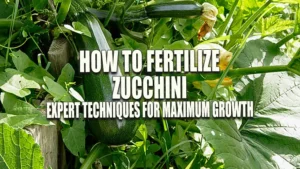

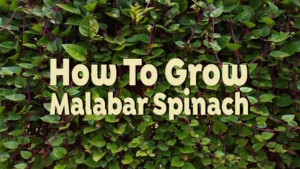

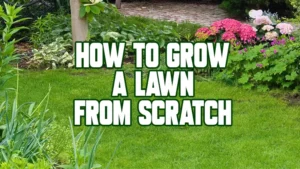

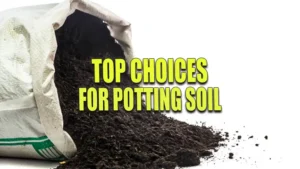


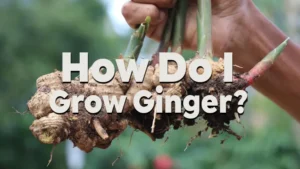
Leave your comment